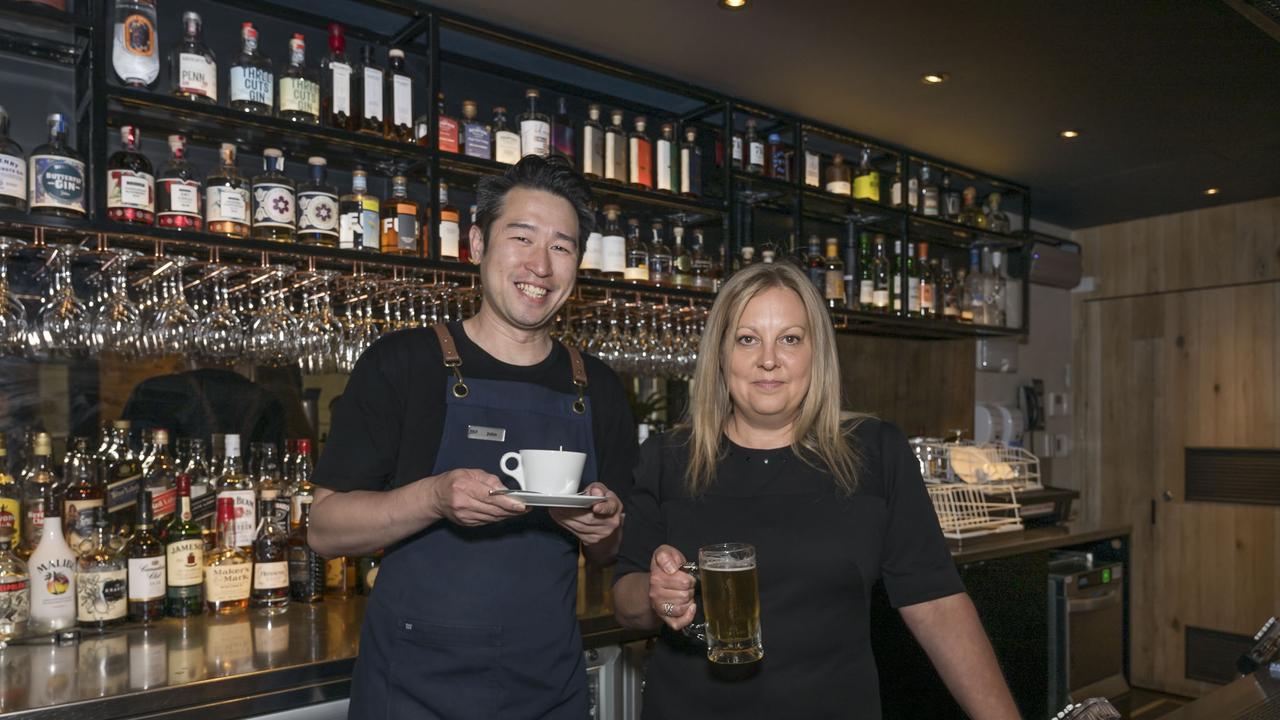One-woman culture crusade
One woman is on a crusade to preserve some of the old ways of putting more flavour in our food.

Lifestyle
Don't miss out on the headlines from Lifestyle. Followed categories will be added to My News.
A PLACE in Ingrid Ramsdale’s class on fermentation was my chance to find out what all the buzz was about.
It is a method of food preservation as old as time, popular with hippies in the ’70s, and now fashionable with chefs, healthy lifestylers and scientists alike.
TasCulturedFoods classes are run by Ingrid in her home, an 1880s building that was once the Copping pub (last licensee, 1960). The business is new, but she has been fermenting foods since the ’80s.
She is qualified as a clinical nutritionist and teacher, and both skills showed in the four-hour session, where the information came thick and fast, but was broken up by tasting breaks into easily digestible chunks.
Fermentation plays a role in many foods and beverages — cheese, bread, chocolate, prosciutto, beer and coffee as well as soy and fish sauce and vinegar. But in our modern diets yoghurt often is the sole flag bearer for food that still contains a live culture.
That the live culture is made up of bacteria and yeast can make fermentation a hard sell.
In his book Cooked, Michael Pollan says: “Industrialisation of the world’s food strongly favours both homogenisation and sterilisation.”
War has been declared on bacteria, even though only 1 per cent are harmful to us.
Ingrid tells her class that kombucha (a brew in which yeast and bacteria feed on tea and sugar) has 10 times the antioxidant power of straight green tea; that kefir (fermented milk) has about 50 strains of lactic acid to yoghurt’s five or 10; and that sauerkraut has 10 times the vitamin C of straight cabbage — all enhancements conferred by fermentation.
All sorts of claims are made for the healing power of kombucha, in which the sugar converted into beneficial acids.
Ingrid says: “I do not think that kombucha really cures anything at all.”
Kombucha, an adaptogen, can stabilise organs and tissues, setting your body up to heal itself.
Just as analysis would show that every batch of fermented food differs from another — because of time, temperature, the raw ingredients you use — so will its affect on one body be quite different from those on another.
The bonus is that kombucha tastes good. It’s light and refreshing only very slightly sweet with a slight fizz.
Soon we are choosing from an array of lemon verbena and pepperberry leaves, fennel seeds, blackberries and chopped carrot, beetroot, ginger and apple to add to some drawn off kombucha to flavour it in a second ferment.
My ginger and verbena leaves choice proves a spritzy winner when I taste it three days later.
Fermenting vegetables “unlocks” many of the nutrients locked in them to make them available for digestion.
They also provide fibre, which feeds the flora already in your gut, which, we are told, comprises about 80 per cent of your immune system.
Vegetable ferments often are called pickles, but they contain no vinegar or added sugar and have not been heated, so are lively probiotics.
In the first break we taste soft kefir cheese flavoured with a beetroot-radish ferment and another with kimchi.
And there is a salad, colourful with any number of fermented vegetables — more than you would normally serve in one dish, but this is a demo.
A week after the class finds me witching away in the kitchen — decanting the ginger carrots I made in class to smaller jars, straining my kefir at a sort of runny yoghurt stage and taking off a litre of kombucha to flavour up for a second ferment.
As anyone who has spoken to me in the intervening week knows I have the zealotry of a convert, having discovered something that has health benefits galore, tastes good and is not tiresome to prepare.
I’ll leave the last word to Michael Pollard: “To ferment your own food is to lodge a small but eloquent protest — on behalf of the senses and the microbes — against the homogenisation of flavours and food experiences now rolling like a great, undifferentiated lawn across the globe.”
Classes at Tasculturedfoods cost $120. You leave with a booklet on each of the three processes, the cultures and equipment needed to begin fermenting, a bottle of your own pickled vegetables tasculturedfoods.com.au info@tasculturedfoods.com.au


